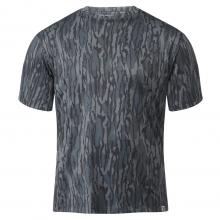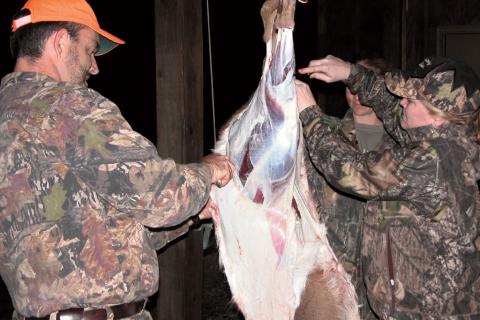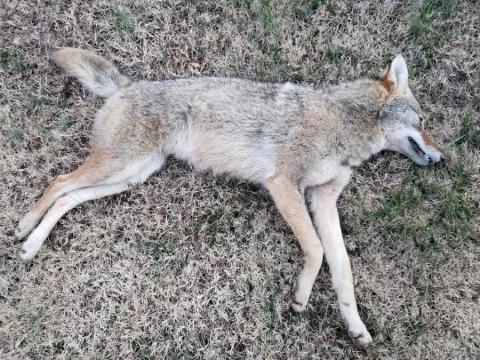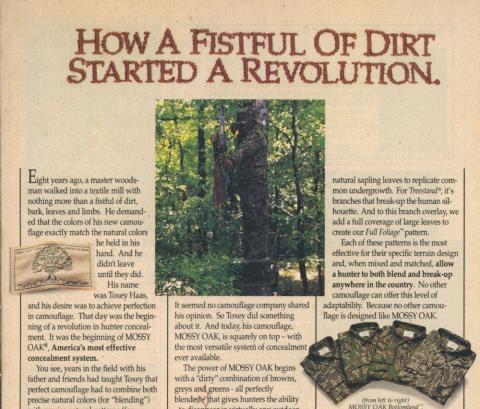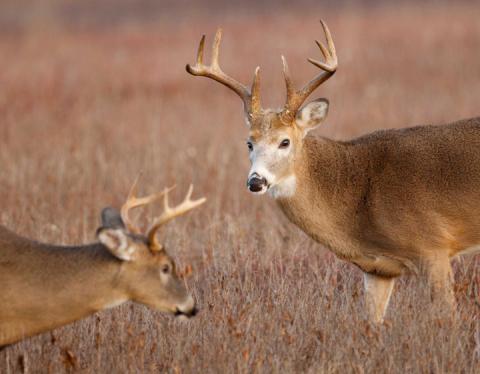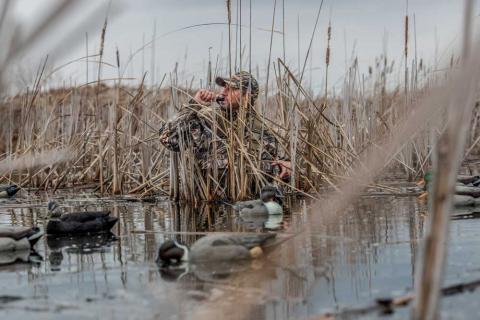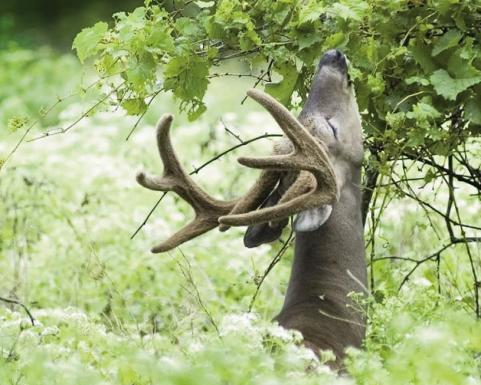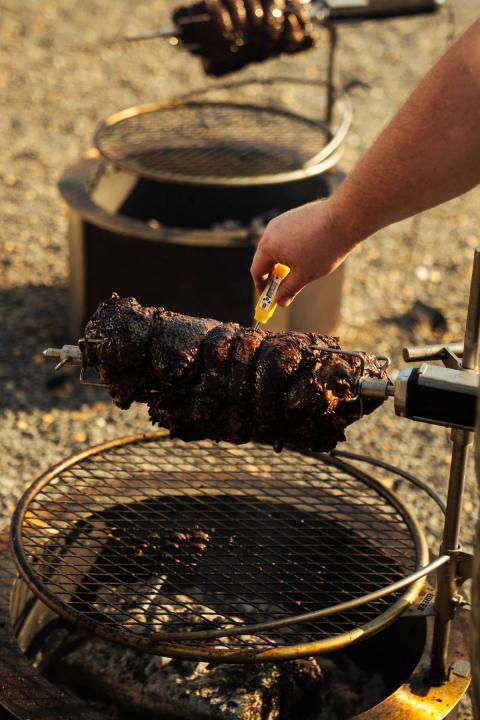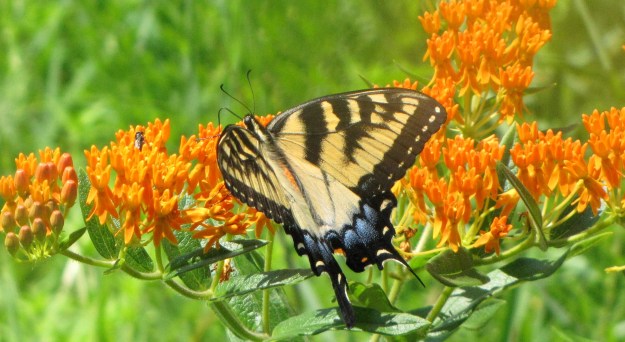
Increasing Beneficial Insects
By Randy Seymore
WAIT! Don’t quit reading yet. I know! I say “insects” and you think “mosquitoes, black flies, chiggers, ticks, gnats and the like.” I understand! You couldn’t be a hunter or spend time in the outdoors and not think this way. These insects have tormented your old dog until he tries to jump in front of your gun. They have imbedded themselves into places you can only talk about with your hunting buddies. They have chewed on your hide and drank your blood until you needed a transfusion. You’ve sucked them down your throat and they’ve flown into your eyes, crawled into your ears, and drank your strongest repellent with impunity. No wonder you think I’ve lost it! But, I’m talking about the good insects, and yes, there are some really, really good ones – the pollinators.
I’d like to talk with you about devoting a part of your “farming for wildlife” to growing insects, especially our native pollinator insects. You’ll warm up to the idea when you see how much it can improve food and habitat for all your other wildlife.
Consider that 80 to 90 percent of the plant species on earth are pollinated by animal (mostly insect) pollinators. Without pollinators there would be no plants and no seeds, which means no food for humans or wildlife. We know that nearly one out of every three bites of food “we humans” eat is dependent on pollinators, but did you know that much of our wildlife is even more dependent on pollinators. Fact is, insects are absolutely critical to young quail, turkey and pheasant, and if the young don’t make it to adults, there’s not much reason for all our other management efforts. Not only are insects a vital food source in specific parts of the birds’ life cycle, they are just as essential to production of food and habitat for the balance of their life cycle.
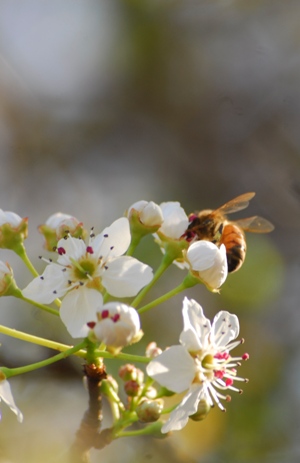 Pollinators are absolutely necessary to sustaining biodiversity and natural ecosystems. The problem is that native pollinators are declining at an alarming rate with potentially devastating consequences. The problem is so bad and the danger so great that language in the 2008 Farm Bill makes pollinators and their habitat a priority for every USDA land manager and conservationist.
Pollinators are absolutely necessary to sustaining biodiversity and natural ecosystems. The problem is that native pollinators are declining at an alarming rate with potentially devastating consequences. The problem is so bad and the danger so great that language in the 2008 Farm Bill makes pollinators and their habitat a priority for every USDA land manager and conservationist.
The diet of turkey poults and quail chicks is almost exclusively insects for the first four weeks of life and only gradually changes to seeds and plant materials. The young need the protein to build rapidly growing bone and muscle, but hens also eat large quantities of insects to supply the huge protein demand of egg production. Dr. Lenny Brennan, quoting a study by M. Nice, reveals quail chicks eat around 65,000 insects and hens eat 76,000 insects during the course of a year. In addition, they consume nearly 5,000,000 seeds. Keep in mind that nesting or brood failure may be as high as 70 percent. Second and third attempts at brood production greatly increase the numbers of insects eaten, but more importantly, extends the time period insects are needed from a few weeks to much of the growing season.
The pollinator insects, along with the larval stage of many of them, are an important part of the insect diet of quail and turkey; however, they are certainly not the only insects on the menu. Insects that dine on the foliage rather than pollinate the plants are a big part of the selection. It is important to remember that the insects need to be within the reach of the young birds in order for the birds to catch them, which means young or low growing plants at the time insects are most needed. Also, there needs to be bare ground to permit the chicks to maneuver through the vegetation for easy access.
By far, the contribution of greatest value to wildlife by native insect pollinators is insuring fertilization - resulting in seed production. You don’t have to be a wildlife biologist to understand what can happen here. No fertilization means no seed, no plants, no food, and no habitat. This could be really bad!
I think we can agree we need insect pollinators. So, what are they, what is causing the decline, and what can you do about the problem?
Our native insect pollinators include bees, butterflies, moths, flies, wasps, beetles, and ants. In addition to the introduced Honey Bee, the US is home to some 4,000 species of native bees. They feed on a wide range of flowering plants and are economically indispensible, and especially so considering the Colony Collapse Disorder devastating Honey Bee colonies.
Flowers have, for the most part, evolved plant parts to facilitate fertilization by specific types of insects and the loss of any one type of insect could mean the loss of a whole genera or family of plants. Beetles are important pollinators and are an important insect food source for young turkey and quail. This may be part of the reason they are so numerous and that there are over 30,000 species in the US.
The decline in native pollinators can be boiled down to three basic causes; habitat loss, habitat degradation, and pesticide use. We farm in expansive fields of monoculture crops in which there is a single short flowering period suitable for only a few select species of pollinators. We herbicide remove all other plant species that could provide food or habitat for pollinators and pesticide remove all except select insects. Just how many pollinator species can you find in a row crop field? Mighty few.
Vast areas for urban sprawl such as homes, factories, businesses, roads, and the other uses of urban life are striped of vegetation. Native vegetation is being replaced or severely reduced by invasive introduced species unsuitable for native pollinators. Mowers, weed eaters, herbicides and other land-management equipment and practices promoting “clean” farming, manicured lawns, mowed roadsides, etc. destroy or degrade native pollinator habitat.
Pesticide use could be the worst problem. Pesticides kill pollinators directly and many pesticides degrade slowly providing a long lasting lethal hazard. Pesticide spray drift has dramatic unintended killing power on native pollinator habitat adjacent to agricultural fields. Domestic lawn and garden pesticide use rivals agricultural use in destroying native pollinators. We simply have eliminated too much of the habitat necessary for the pollinators to live, eat, and reproduce.
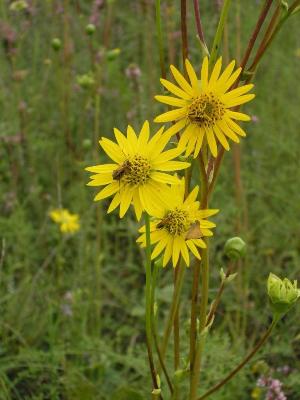 What we can do to remedy the problem can be very effective, and actually, pretty simple. We need to establish native pollinator habitat; this means establishing a landscape that provides the “life cycle needs” of the pollinators. This can be done in three steps:
What we can do to remedy the problem can be very effective, and actually, pretty simple. We need to establish native pollinator habitat; this means establishing a landscape that provides the “life cycle needs” of the pollinators. This can be done in three steps:
First Step – Establish plants to provide foraging sites for food. In making your choice of plants for forage sites there are a number of things you need to take into consideration. You need to choose native plants that are adapted to your area. Choose plants so that you have a number of species blooming at any time during the growing season and select species targeted to specific pollinators. It is important to plant species that will provide a variety of color during each period of the growing season. Include plants that will be preferred food choices for insect larva.
Second step – Choose plants that will provide shelter as well as nesting, egg-laying and overwintering habitat. It will be important to include grasses for nesting and for the larva of several species. The grasses and flowering plants need to be variable in height to provide predator protection. Choose plant species that leave bare ground for nesting. Also, dead stems, snags, and leaf litter are critical for nesting sites. Ideally the site will be near woods, successional plants, and water where possible.
(Note that the Pollinator Seed Mix offered by Nativ Nurseries considers all the factors in steps 1 & 2 in development of the seed mix)
Third step – Prohibit or limit the exposure pesticides, to the extent reasonable. We know it’s not reasonable to completely stop pesticide treating our food crops. But, maybe it is reasonable to take steps to control spray drift. We can choose not to spray if winds are too high or we can wait to spray until the wind is from a different direction. Perhaps we can spend a little more and use a more selective pesticide.
Look closely at these elements of what is needed to provide native pollinator habitat and you will see that it is mostly the same elements you use to provide quality habitat for turkey, quail, deer, rabbits, and other wildlife. You have a diversity of adapted plants providing a continual food source, cover and protection from the elements, bare ground for ease of movement, materials and concealment for nesting and brood protection, avian and terrestrial predator cover, and water. Farming to increase pollinator insect populations can provide big benefits in your wildlife management of all species.






